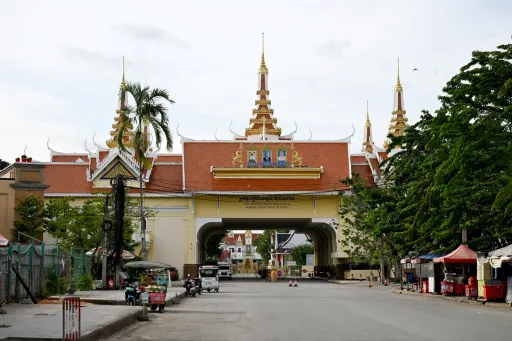Belgium's King Philippe has not apologised for the exploitation, racism and acts of violence during his country's colonisation of the Democratic Republic of the Congo (DRC).
Rather he chose to convey his “deepest regrets” for the colonial humiliation and punishment meted out to the Congolese people.
Philippe became the first Belgian official two years ago to express regret for colonisation, and some Congolese hoped he would issue a formal apology during his first visit to Congo since taking the throne in 2013.
"Even though many Belgians invested themselves sincerely, loving Congo and its people deeply, the colonial regime itself was based on exploitation and domination," King Philippe told a joint session of parliament in the capital Kinshasa of DRC.
"This regime was one of unequal relations, unjustifiable in itself, marked by paternalism, discrimination and racism."
"It led to violent acts and humiliations. On the occasion of my first trip to Congo, right here, in front of the Congolese people and those who still suffer today, I wish to reaffirm my deepest regrets for those wounds of the past," he added.
Although the Belgian King has started to face his country’s colonial background, not using “apology” disappointed some people who expected it.
Here are some atrocities commited by Belgium during colonial rule in DRC during the 19th and 20th centuries.
Death of 10 million Congolese
According to some estimates, killings, famine and disease caused the deaths of up to 10 million Congolese during just the first 23 years of Belgium's rule from 1885 to 1960, when King Leopold II ruled the Congo Free State as a personal fiefdom.
King Leopold II has carved his own private colony out of 100km2 of Central African rainforest by claiming to protect the "natives" from Arab slavers.
However, he has started horrific atrocities on the African continent. During his colonial rule, the population of Congo estimately had fallen by half to 10 million.
Rape and torment
King Leopold II has turned the colonised lands into a massive labour camp, and made a big fortune for himself from the harvest of wild rubber.
The rubber harvest in Congo directly contributed to Belgium's rising economic power.
However, this fortune comes not only from harvesting local sources but also from human capital from the region.
By pushing locals to produce more, Congolese people worked and lived in brutal conditions and they had to meet “quotas.”
Many people were raped and tormented by colonial forces at the time.
Chopping hands and feets
King Leopold II cut the hands and feets of people who resisted him, and even the children and wives of the men who couldn’t meet their “quotas” met the same fate.
According to Belgian colonial rulers, chopping is a kind of punishment to prove their superiority to the Congolese.
Belgium found a brutal solution to quell unrest and Congolese soldiers were obliged to prove that they were not wasting costly ammunition by providing one cut hand of any native rebel they killed.
The brutal crimes of Belgium, which more or less started in 1885 were first revealed by the journalist Edmund Dene Morel at the beginning of the 20th Century.
Morel made a huge effort to spread the word about what was happening in Belgium’s colony.
He revealed photos of forced labour, murders, child soldiers, handless people, torture and genocide in the Congo Free State.
In 2020, the statue of the infamous King Leopold II was removed by protesters from a public square in the city of Antwerp in Belgium during worldwide protests against the West’s racist colonial past.
























